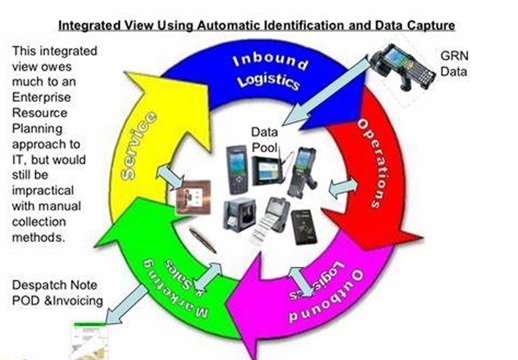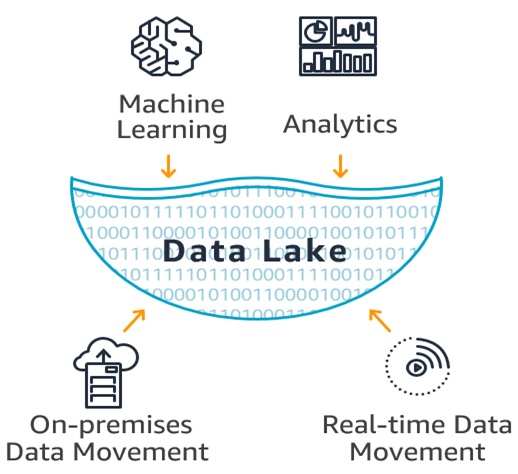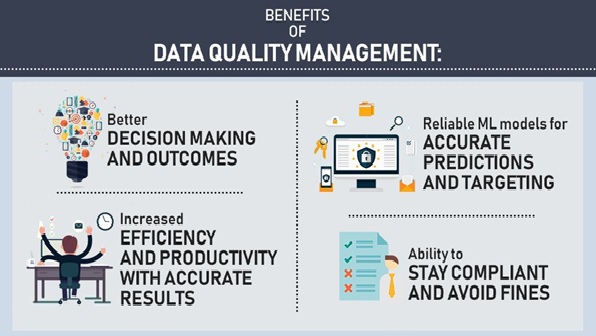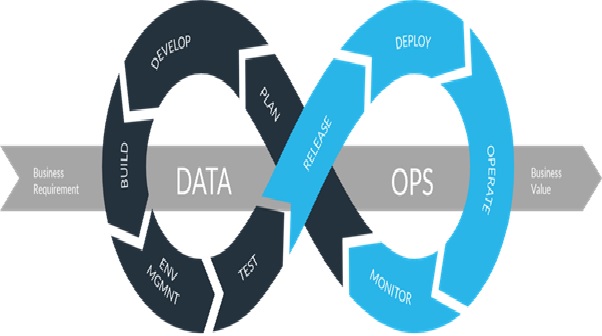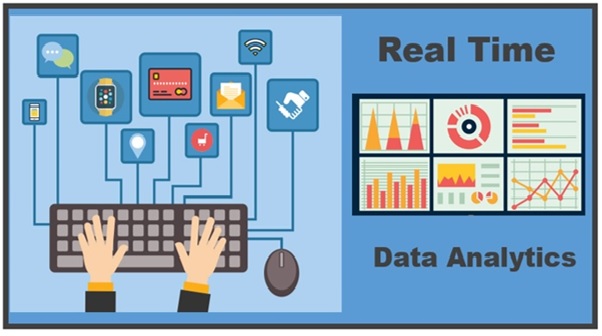Automatic Identification and Data Capture (AIDC)
Automatic Identification and Data Capture (AIDC) is a broad category of technologies used to collect information from an individual, object, image or sound without manual data entry. AIDC systems are used to manage inventory, delivery, assets, security and documents. When AIDC technologies collect data, it is automatically stored in a computer system, where it is then categorized and, depending on the software, is aggregated.[4]

Figure 1. The automatic identification and data capture (AIDC)
Figure 1 shows Automatic Identification and Data Capture (AIDC) is a broad category of technologies used to collect information from an individual, object, image or sound without manual data entry. AIDC systems are used to manage inventory, delivery, assets, security and documents. Sectors that use AIDC systems include distribution, manufacturing, transportation, medicine, government and retail, among many others.
AIDC applications typically fall into one of a few categories: identification and validation at the source, tracking, and interfaces to other systems. The actual technologies involved, the information obtained and the purpose of collection vary widely. [1]
Types of Data Capture Technologies
Some common automated data collection technologies include:
- Barcodes: Barcodes are the most common manner of tracking objects. A bar code is read-only and requires scanning with a barcode reader.
- Radio Frequency Identification (RFID): RFID allows objects to be automatically identified and tracked. RFID tags can track objects at every stage of the production process.
- Voice Recognition: This technology can recognize and understand speech. Voice recognition streamlines the manufacturing process through voice search and data entry.
- Magnetic Stripes: These devices contain magnetic strips that hold personal information. When used in ID smart cards, this technology improves security systems for warehouses.
- Optical Character Recognition (OCR): OCR technology reads and digitizes text from scanned documents and images. In other words, it has automated the process of data entry, making it machine readable. [3]
The Future:
The future plans for AIDC are as simple as the application is difficult. If all items are equipped with a minute identifying device, daily life on earth will go through a major transformation. Products running out of stock or being wasted will no longer exist because we will know exactly what is being consumed anywhere on the globe. Theft will be non-existent when we know where an item is at all times.
Counterfeiting of critical or expensive items such as drugs, repair parts or electronic components will be reduced or eliminated because manufacturers or other supply chain businesses will know where their products are at all times.
Product waste and spoilage will be greatly reduced because environmental sensors will alert suppliers or consumers when sensitive products are exposed to excessive heat, cold, vibration or other risks.
Supply chains will operate far more efficiently because suppliers will ship only the products needed when they are needed. This will also bring about a consumer and supplier price drop on most items.[2]
References:
- https://searcherp.techtarget.com/definition/Automatic-Identification-and-Data-Capture-AIDC
- https://www.abr.com/automatic-identification-and-data-capture-aidc/
- https://www.radley.com/how-is-aidc-used-in-manufacturing/
- https://www.indicative.com/resource/automatic-identification-and-data-capture/
Cite this article:
Thanusri swetha J (2021), Automatic Identification and Data Capture (AIDC), Anatechmaz, pp. 17



